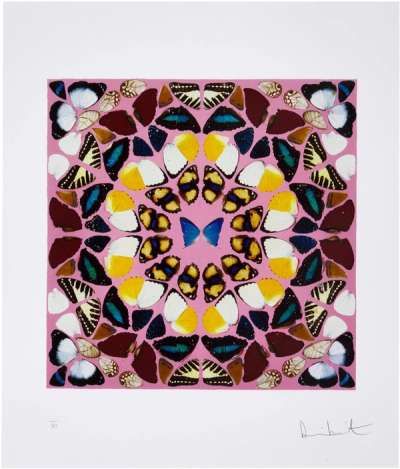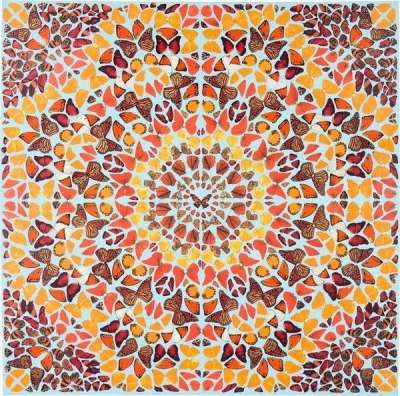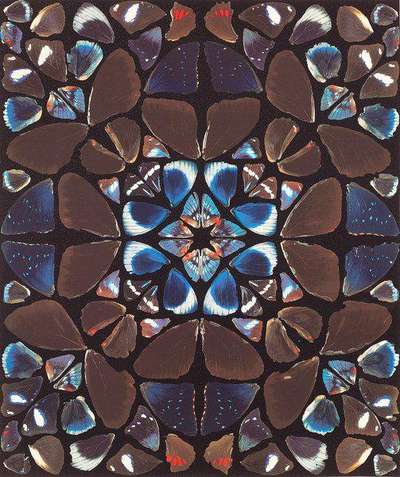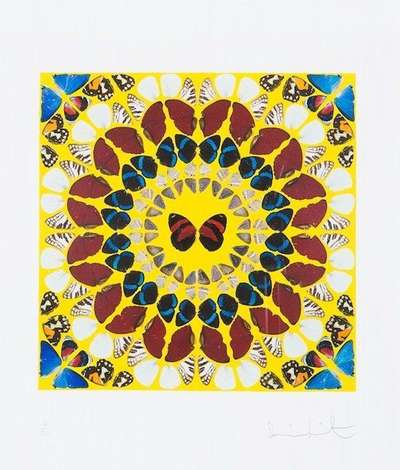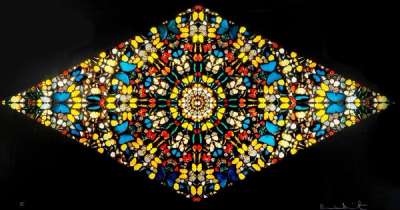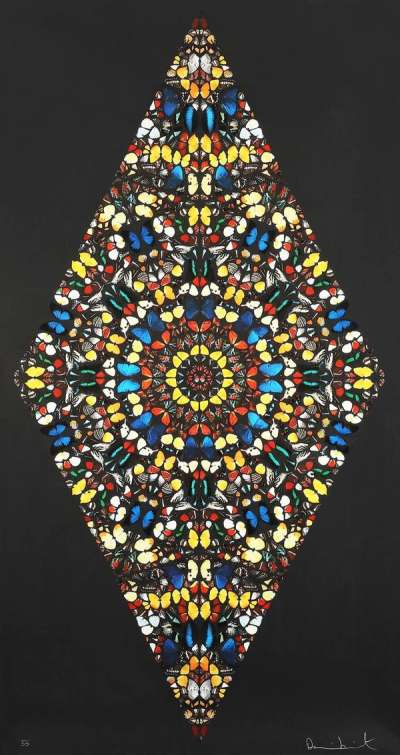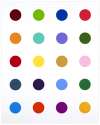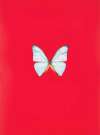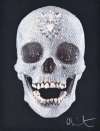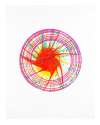Kaleidoscope
This 2001 Damien Hirst print series follow his ambitious Kaleidoscope paintings, in which thousands of real butterfly wings compose complex concentric patterns in household paint. Redolent of ecclesiastical stained-glass and Buddhist mandalas the prints are meditative; even as they build a meticulous pattern, the individuality of each butterfly is undeniably poignant.
Damien Hirst Kaleidoscope For sale
Kaleidoscope Market value
Auction Results
| Artwork | Auction Date | Auction House | Return to Seller | Hammer Price | Buyer Paid |
|---|---|---|---|---|---|
 Deific Damien Hirst Signed Print | 25 Oct 2024 | Phillips London | £12,750 | £15,000 | £20,000 |
 Pardon Damien Hirst Signed Print | 25 Oct 2024 | Phillips London | £7,650 | £9,000 | £12,000 |
 Beneficence Damien Hirst Signed Print | 14 Aug 2024 | Bonhams New York | £2,763 | £3,250 | £4,200 |
 Faithless Damien Hirst Signed Print | 13 Dec 2022 | Bonhams New Bond Street | £6,800 | £8,000 | £10,000 |
 Miracle Damien Hirst Signed Print | 14 Sept 2022 | Phillips London | £3,825 | £4,500 | £6,000 |
 Sceptic Damien Hirst Signed Print | 29 Jul 2021 | Seoul Auction | £8,075 | £9,500 | £11,000 |
 Covenant Damien Hirst Signed Print | 23 Oct 2020 | Sotheby's New York | £12,325 | £14,500 | £19,000 |
Sell Your Art
with Us
with Us
Join Our Network of Collectors. Buy, Sell and Track Demand
Meaning & Analysis
Hirst’s ambitious Kaleidoscope project began in 2001, and has birthed many kaleidoscopic, intricate works made from thousands of butterfly wings. The series is made up of a wide variety of impressive paintings and prints, all of which depict mesmerising patterns of concentric circles made up of hundreds of butterflies. Hirst ingeniously makes the pieces by placing thousands of different coloured butterfly wings in geometric patterns into household paint. The resulting works are spectacular and seize the viewer’s attention, demanding them to inspect the patterns to appreciate the hundreds of different little butterflies that are part of the composition.
Throughout the series, Hirst uses bold and vibrant colours which resonate with the designs of Buddhist mandalas. Each design, however, is different and involves a unique arrangement of butterflies, bringing a sense of excitement and dynamism to the series.
The first painting produced by Hirst that belongs to the Kaleidoscope series was It’s a Wonderful World, made in 2001. The spectacular diamond shaped canvas resonates with other works in the series, such as Sceptic (2006) and Faithless (2006), which similarly use a diamond shape as the base for the geometric butterfly patterns. Works from the Kaleidoscope series were first exhibited at the White Cube, London, in 2003 as part of the Romance in the Age of Uncertainty exhibition. Later, in 2007, Hirst presented a large collection of the paintings in a solo show, Superstition, at the Gagosian Gallery in London, as well as in Beverly Hills.
The Kaleidoscope works are imbued with spiritual symbolism. Butterflies were used by the Greeks to depict the Psyche and the soul, and are often found in Christian imagery to signify the resurrection. As well as resonating with Buddhist mandalas, the patterns are also reminiscent of the stained-glass windows found in Gothic churches. Many of the works in the Kaleidoscope series were given names by Hirst which directly reference Christian iconography, and a collection of the paintings produced in 2008 were all named after psalms from the Old Testament. The spiritual heritage attached to the butterfly, along with the spectacular patterns Hirst created which resonate strongly with a variety of religions means that the Kaleidoscope series is a way for Hirst to address the theme of religion in his artworks. As an artist, Hirst is fascinated with contemporary belief systems such as religion, love and medicine and often uses his art to explore them and dissect the tensions at the heart of human existence.
Another important theme for Hirst which the artist explores through the Kaleidoscope series is life and death. Hirst’s love for butterflies lies, in part, from the way they retain an iridescent beauty, even in death, as evidenced by the magnificent and beautiful paintings Hirst makes out of dead butterflies. The artist explains, “I love butterflies because when they are dead they look alive.” For Hirst, butterflies embody the fragility of life and the use of the insect is a means for him to address questions of mortality. Since the late 1980’s, Hirst has used various artistic practices, from installation to sculpture, painting and drawing to explore the relationship between art, life and death. Hirst explains, “art’s about life and it can’t really be about anything else … there isn’t anything else.”

